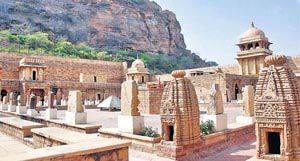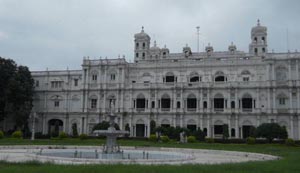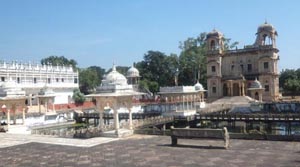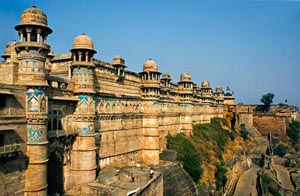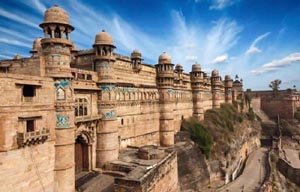Gwalior Monuments - Historical Places to Visit in Gwalior
Historical Monuments / Forts / Palaces / Places to Visit in Gwalior
Here you can check list of names and information on famous historical forts / palaces / monuments / places to visit in Gwalior, Madhya Pradesh, India. These famous monuments of Gwalior are most visited and most sought after best tourist places. You can also find images of Gwalior monuments / places / forts / palaces.
On an outcrop of Vindhyan sandstone on a steep, rocky, solitary, thin and long hill known as Gopachal, Gwalior Fort was built in a successful manner. A small river named Swarnrekha gently flows near the fort and its palace. The fort and its complex are perfectly maintained plus house several historic monuments such as palaces, Hindu temples and large water tanks. The grand palace in the fort premises are the Shah Jahan palace, the Karan palace, the Jahangir palace, the Gujari palace and Man mandir palace.
The European architecture of the Jai Vilas Palace or Jai Vilas Mahal was well-designed and successfully built by Lt. Col. Sir Michael Filose who was popularly known as Mukhel Sahib under the direct guidance of H. H. Maharaja Jayaji Rao Scindia, the Maratha Maharaja of Gwalior, in order to welcome Edward VII. This palace has more than 400 rooms from which 40 rooms are exclusively transformed at present into Jiwaji Rao Scindia Museum by the state government.
Madhav Vilas Palace is well built in the 18th century with a combination of Mughal, Europe and Indian architectural pattern. The first and foremost importance of this palace is its color textured on its walls. It is good looking Pink mixed with rose color combination. It colors are still long lasting. These colors were prepared by natural vegetable and flowers extraction known in that time. It is a rectangle type three storied structure built inside the Gwalior fortified areas, which is highly safe at a high citadel in the Shiva Puri region of Gwalior.
Man Mandir Palace is basically built in the Hindu architectural structure. It has many Vedic patronage depicted on its stone carvings all around the edifice. This is a three storied structure built on a citadel. It is a large square type palace with a centrally open place filled with beautiful gardens and stone sculptures. The entrance wall is splendidly carved on its walls. It has beautiful floral designs, ditties of Hindu gods and goddesses. Its carving works on the walls are breathtaking.
This monument is one of the most well maintained forts and palaces in all of India. Fort encloses within it palaces, temple and water tanks which are architectural marvels that will keep one spellbound. The fort encompasses within itself an area of 3 sq. kilometres and is 35 meters in height. The rampart of the fort has been built along the edge of the hill and is connected with the means of 6 towers. There are two entrances to the fort, one is the Hathi Pul which is the main entrance and the other one is the Badalgarh gate.
- Andaman Nicobar Monuments
- Andhra Pradesh Monuments
- Assam Monuments
- Bihar Monuments
- Chhattisgarh Monuments
- New Delhi Monuments
- Goa Monuments
- Gujarat Monuments
- Haryana Monuments
- Himachal Pradesh Monuments
- Jammu and Kashmir Monuments
- Karnataka Monuments
- Kerala Monuments
- Madhya Pradesh Monuments
- Maharashtra Monuments
- Odisha Monuments
- Punjab Monuments
- Rajasthan Monuments
- Tamil Nadu Monuments
- Telangana Monuments
- Uttar Pradesh Monuments
- West Bengal Monuments
